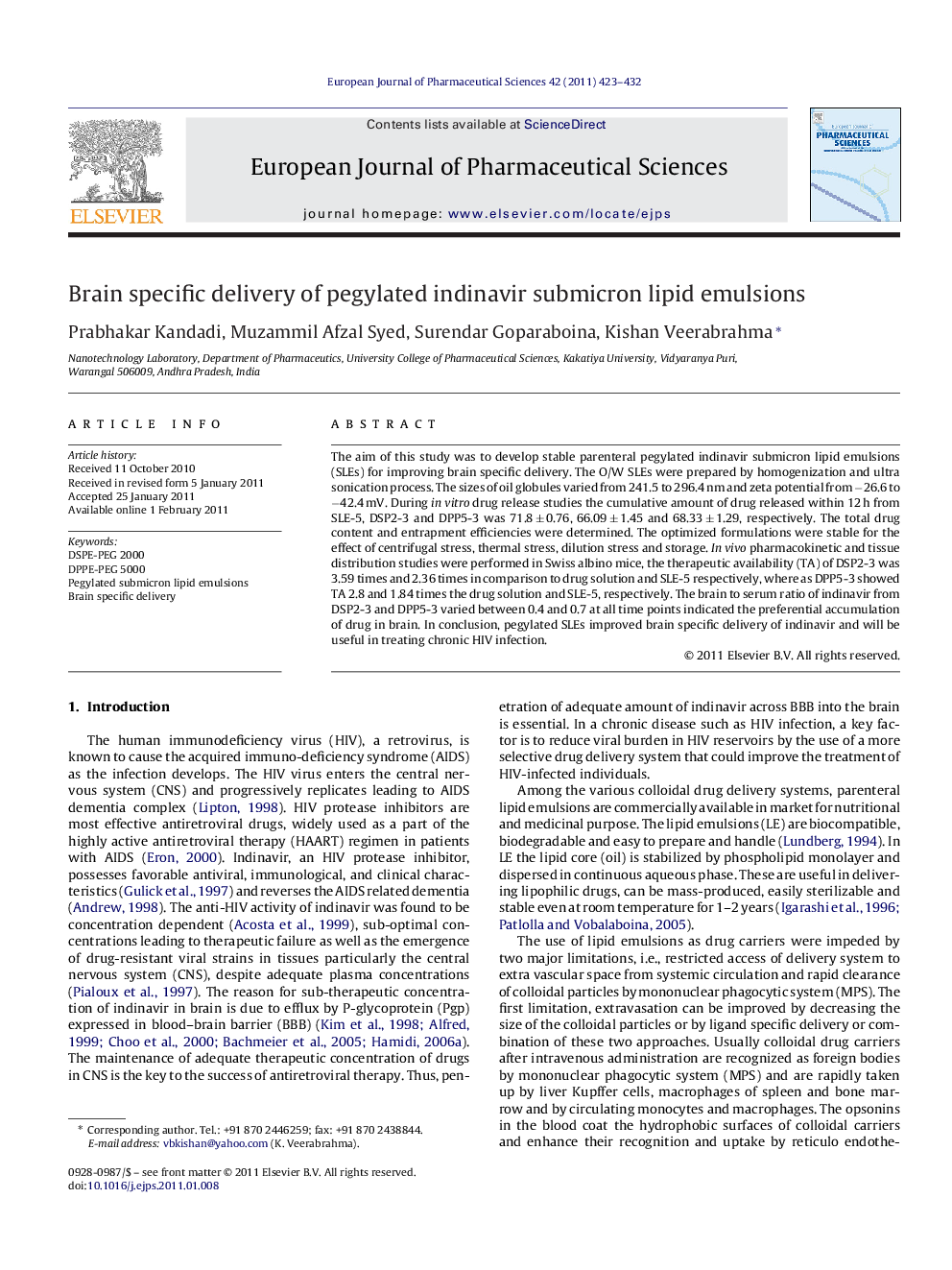| Article ID | Journal | Published Year | Pages | File Type |
|---|---|---|---|---|
| 2481365 | European Journal of Pharmaceutical Sciences | 2011 | 10 Pages |
The aim of this study was to develop stable parenteral pegylated indinavir submicron lipid emulsions (SLEs) for improving brain specific delivery. The O/W SLEs were prepared by homogenization and ultra sonication process. The sizes of oil globules varied from 241.5 to 296.4 nm and zeta potential from −26.6 to −42.4 mV. During in vitro drug release studies the cumulative amount of drug released within 12 h from SLE-5, DSP2-3 and DPP5-3 was 71.8 ± 0.76, 66.09 ± 1.45 and 68.33 ± 1.29, respectively. The total drug content and entrapment efficiencies were determined. The optimized formulations were stable for the effect of centrifugal stress, thermal stress, dilution stress and storage. In vivo pharmacokinetic and tissue distribution studies were performed in Swiss albino mice, the therapeutic availability (TA) of DSP2-3 was 3.59 times and 2.36 times in comparison to drug solution and SLE-5 respectively, where as DPP5-3 showed TA 2.8 and 1.84 times the drug solution and SLE-5, respectively. The brain to serum ratio of indinavir from DSP2-3 and DPP5-3 varied between 0.4 and 0.7 at all time points indicated the preferential accumulation of drug in brain. In conclusion, pegylated SLEs improved brain specific delivery of indinavir and will be useful in treating chronic HIV infection.
Graphical abstractFigure optionsDownload full-size imageDownload as PowerPoint slide
